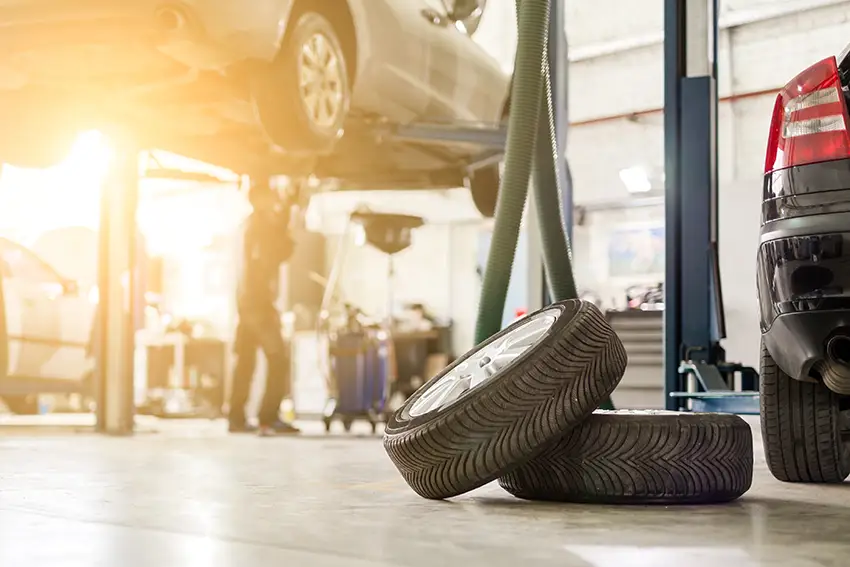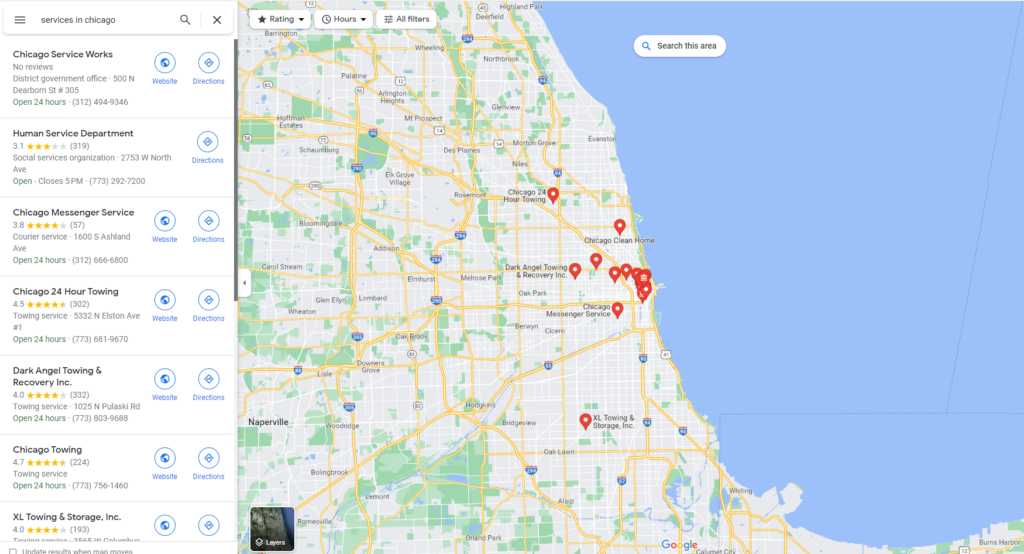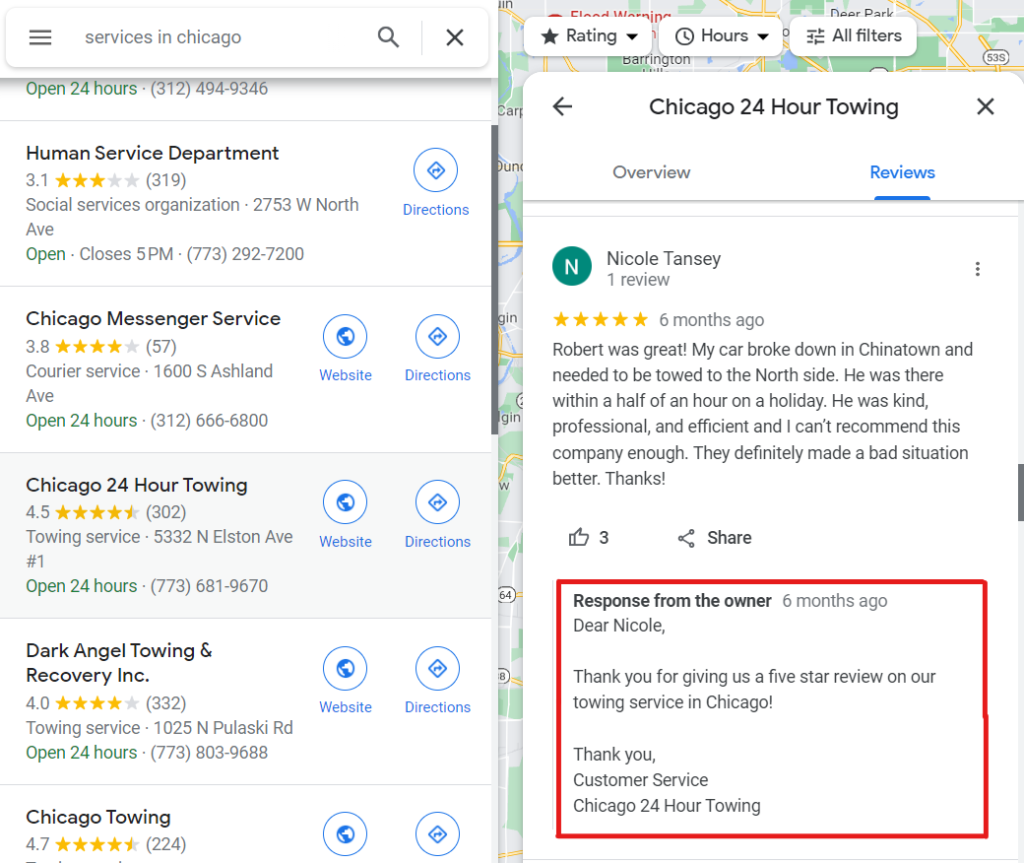As a digital marketing agency, we work very closely with local businesses, including auto repair shops. Our experience in helping our clients increase their local business gives us insight into some of the most critical aspects of digital marketing for auto repair services.
But before we touch on digital marketing, let’s be honest about what matters: quality people, service, and repairs.
Local businesses thrive on repeat customers and word-of-mouth referrals. No matter how many new customers a digital marketing strategy attracts, if the front-of-shop staff is unfriendly, the mechanics are unreliable, or the repairs don’t work, the business won’t last.
All digital marketing advice and other marketing input depend on customers getting:
- Good service
- Reliable repairs
- Fair price
What are the key components of Auto Repair Digital Marketing?
There are many things you can do to market your shop online. But, there are several key aspects of digital marketing that you must do. Here is a list of digital marketing requirements.
There is a lot you can do, but at the very least, here are the key elements:
- Online presence: website and social media profiles
- Search engine optimization: getting your site content right
- Social media activity: it’s all local
- Online advertising: Search and Social
- Tracking, Analytics & Reporting
Online presence: Website and social profiles
The first step in a digital marketing program is making it easy for prospective repair customers to learn about your service and contact you. The two main areas are a website and your business on social media.
Website
You need a website, obviously. It must have explicit content and ways for customers to schedule a repair service or talk to a mechanic. It must also be set up so search engines understand your services (we’ll touch on SEO later).
Social Media Profiles
Social profiles have become as important as websites. Facebook and Google Business Profiles are key online sources for prospective customers. You must keep these up-to-date and active. A well-set-up social media profile includes location information, a phone number, photos, explanations of service, and regular updates/postings.
Search Engine Optimization (SEO) for Auto Repair
While word-of-mouth is the number one driver of new customers, auto repair shops are also found by people using Google Search or Bing. Search engines must know your services and your business’s location so prospective customers can see it in the search results.
One challenge is that your competitors want to appear high in the search results or the maps just as much as you do. While SEO has many facets, here are some things you can do to increase your search engine results.
Clear content on the homepage
Use your homepage to identify your core services. Use clear titles with short paragraphs for each service and link to inner pages that provide a deeper explanation. Simply listing your services on your homepage is not enough; you must link to more content.
Name, Address, Phone Number (NAP)
This information is critical for people to contact you and for search engines to know when to show your services to people searching in your area. NAP information should be in the site’s footer, appear on every page, and be on a location/contact us page.
Structure the NAP
Search engines are good at recognizing NAP information. You can add NAP information to the site with markup or other code to make it easier. Schema.org is the ‘keeper’ of the structure formatting and a great resource.
Structure your Content
Content structure is key to helping search engines understand what you do. And your understanding of your customers and how they ask about your services is a great way to think about it.
Consider tires. What are the different services related to tires?
Tire repair, tire replacement, tire rotation, tire balancing, and others are ways a potential customer may think about your tire service and how they may search for it. Articulating this on your tire services page is important.
But it can go deeper than that.
Some people who need new tires may search for “new tires” or “tire replacement.” They may search for “Goodyear tires” or “Toyo tires.” The inference is that they are looking for new tires but a particular tire brand. So, you should create a page for Goodyear tires and link to it from your “Tire Services” page under the “Tire replacement” section.
Being specific lets Google and prospective customers know you sell and install Goodyear tires.
SEO can encompass a lot more. But this is about broader Auto Shop marketing.
Check out Justin’s post for a deeper dive into Auto Shop SEO.
Google Business Profile
On this note, ensure your Google Business Profile (GBP) is current. Many people searching for a local business will just get to the GBP and call from there.
You can claim your business and manage it here. Have photos of the repair shop, interior and exterior. New customers will be more comfortable if they know what to expect.
Locally Social
An auto repair shop is local by nature. The customers come from the surrounding area. Online (and offline) local involvement and interest are critical to a small business. So, while having an updated local business social profile is required, a local shop should do much more.
A stagnant profile may give the impression that the business is not in operation or engaged with the community.
Facebook is, for now, the primary social platform. But certainly not the only one. Nextdoor and others are potential channels as well. But, go deeper rather than spread out too thin.
Posting on Social Media
Posts should go beyond auto repair topics. Identify local community organizations, such as park districts, chambers of commerce, schools, VFWs, etc., and keep up with their local activities. Mention them and link to them in your posts. Share their posts.
Attend and share photos and comments on local events. On your posts, shout out to other local businesses. Engage, in person and online, with the community on which the shop depends.
Online Advertising
PPC Advertising for Auto Repair
Pay-per-click advertising is still a major driver for the repair shop business. There are many options for PPC advertising, with Google being the primary and, for most shops, likely the only search engine. Tutorials are available to get started in Google PPC, but Google also has a simplified Local Services Ads (LSA) program.
One point of caution: LSA is pretty opaque. You do not have much control over the ads; you set a budget and a target area, give Google some information about your services/search terms, and Google does the rest. The LSA is a good place to start if you don’t have the time or resources to manage a search program.
Facebook/Instagram Ads
Facebook and Instagram are great ways to promote your business to the local community. You can be creative in advertising, run seasonal promotions, and keep your name present among potential customers.
Tracking and Analytics
It wouldn’t be digital marketing without mentioning tracking and analytics. Setting up a Google GA4 account and adding it to your website is essential for measuring your digital marketing activity.
Properly configured, GA4 will show you :
- where your visitors are coming from
- which channels drive leads and calls
- give you a sense of what content is important
While we can write pages about analytics and reporting and how to use it, the important part for now is just setting it up.
You can do so many things online to promote an auto repair business. But, the above covers the more critical aspects of digital marketing. If you need assistance with your online advertising, reach out to us. We’d love to help.






